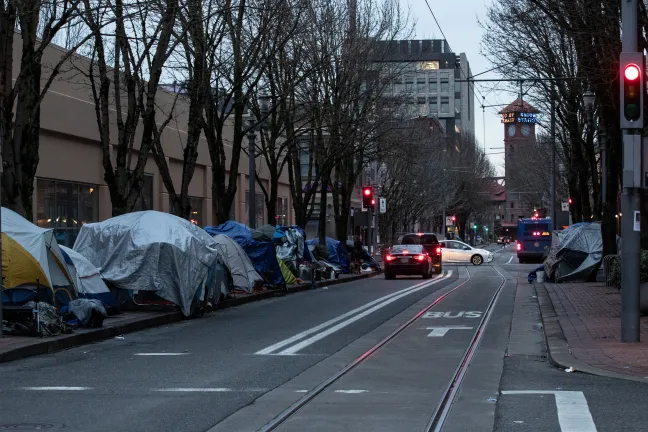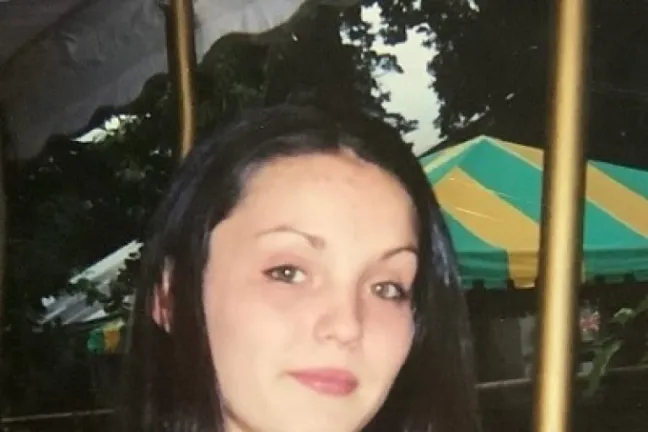The Multnomah County Health Department’s annual review of deaths finds that during calendar year 2021, at least 193 people died while experiencing homelessness. The number is up from 126 the previous year, and is the highest since Multnomah County began analyzing medical examiner deaths in 2011.
At the same time, the rough proportion of deaths occurring in homeless individuals has remained steady over the most recent six years, averaging 10% of all deaths investigated by the Medical Examiner.
View and download a copy of the report here. Each year Multnomah County undertakes this report in partnership with Street Roots to determine the number, characteristics and causes of homeless deaths in Multnomah County. For more than a decade, the detailed analysis in Domicile Unknown has helped raise awareness about the deadly risks that people living unsheltered experience, from exposure to the elements and interpersonal violence, to the impact of untreated mental health and substance use disorders.
Deaths that meet criteria for medical examiner investigations are often premature by definition, but the data shows by just how much. The average age of death among men experiencing homelessness in 2021 was 48. For women, it was 46. That’s three decades younger than the average life expectancy for someone living in the United States.
In 2021, because of the ongoing threat of COVID-19, even the life-saving act of coming into a shelter held some risk. The transmissibility of the virus disrupted formal and informal resources, separated people from their safety nets and isolated them. At the very moment the pandemic was accelerating the spread and severity of substance use and mental health disorders — among housed and unhoused people alike — our community was actively losing the counselors, residential treatment beds and sobering resources required to keep up with the need.
Two deaths identified as part of this report resulted from complications of COVID-19; the virus was a contributing cause in a third. No COVID-19 deaths were identified in 2020.
“It’s impossible to capture all of the rippling effects of the COVID-19 pandemic on people’s lives, but there is no question that 2021 was another extraordinarily difficult year,” said Dr. Jennifer Vines, Multnomah County Health Officer.
COVID-19 also drove more people into homelessness and onto the street, where they were exposed to violence that increased across the community. In the Point in Time Count conducted in January 2022, more than 500 people identified the pandemic as a cause for their homelessness — a number that equates to more than half the total increase in homelessness since 2019.
In 2021, more people experiencing homelessness died of homicide than at any time since 2011, more than doubling from eight in 2020 to 18. That mirrors an 83% increase in overall homicides documented by the Portland Police Bureau, which reported 90 homicides.
Unsheltered people also faced unprecedented severe weather. Four people died of overheating during the historic and devastating Heat Dome event June 25 to June 30, 2021, when temperatures reached 116 degrees Fahrenheit. And hyperthermia contributed to a fifth death, an overdose, during that period.
However, more people experiencing homelessness died of cold in 2021 than heat. There were eight deaths in which hypothermia, or low body temperature, contributed — up from three deaths in 2020. Only one occurred during severe cold or winter emergency events, but all were during Oregon’s winter months, often in combination with substance use.
“It’s a life that’s based not only on survival, but surviving that survival: People reach for ways to endure,’’ Kaia Sand, executive director of Street Roots, wrote in the report’s introduction.
Highly potent and increasingly available substances, often used in combination, remain a leading cause of death. Methamphetamine, a stimulant that can overstress the brain and heart, contributed to 93 deaths — nearly half of all deaths, and 82% of all deaths involving substances — the highest total number and highest percentage of total cases since Domicile Unknown was first published.
But fentanyl, used either alone or in combination with other substances, has also emerged as a key factor.
“Spring 2021 was when we issued our first public alert around fentanyl,” said Dr. Jennifer Vines. “For a long time, we imagined that fentanyl was a drug people would stumble upon accidentally. What we weren’t prepared for was the use of fentanyl as a drug that became cheap and highly available, and that is so potent and short acting that people actually develop an addiction and seek out the drug itself, even though it carries such high risk of overdose.”
Fentanyl, a synthetic opioid increasingly sold as cheap pills on the street, was a primary or contributing factor in 36 deaths (32%), a dramatic increase from four deaths in 2020, and an average of one to two deaths a year since it was first recorded as a factor in 2017.
“Never have I seen the drug supply shift in such a short amount of time,” said Haven Wheelock, program supervisor of the Drug Users Health Services at Outside In.
And that toll is likely to continue. The Multnomah County Sheriff’s Office reported the number of individual fentanyl pills seized jumped from 7,423 in 2021 to 141,864 a year later. One September 2022 bust netted 92,000 pills alone, as well as 10 pounds of cocaine cut with fentanyl.
“These are people who have families, who have community, who have friends,” said Wheelock. “I’m still going to hold out hope that we are making changes and moving forward so that people aren’t dying in their forties from things that could be prevented.”
Crystal Sellers died in 2021 at the age of 37 from a combination of methamphetamine and fentanyl. Her sister Melinda Peevy shared their family’s experience with substance use in this year’s report, a reminder of the hundreds of relatives who lost a loved one.
“We grew up poor, got into our own addictions young and carried that into adulthood,” Peevy said. “I decided to break the cycle, and I thought she could, too. She was the strongest.
“But she couldn’t beat this.”


